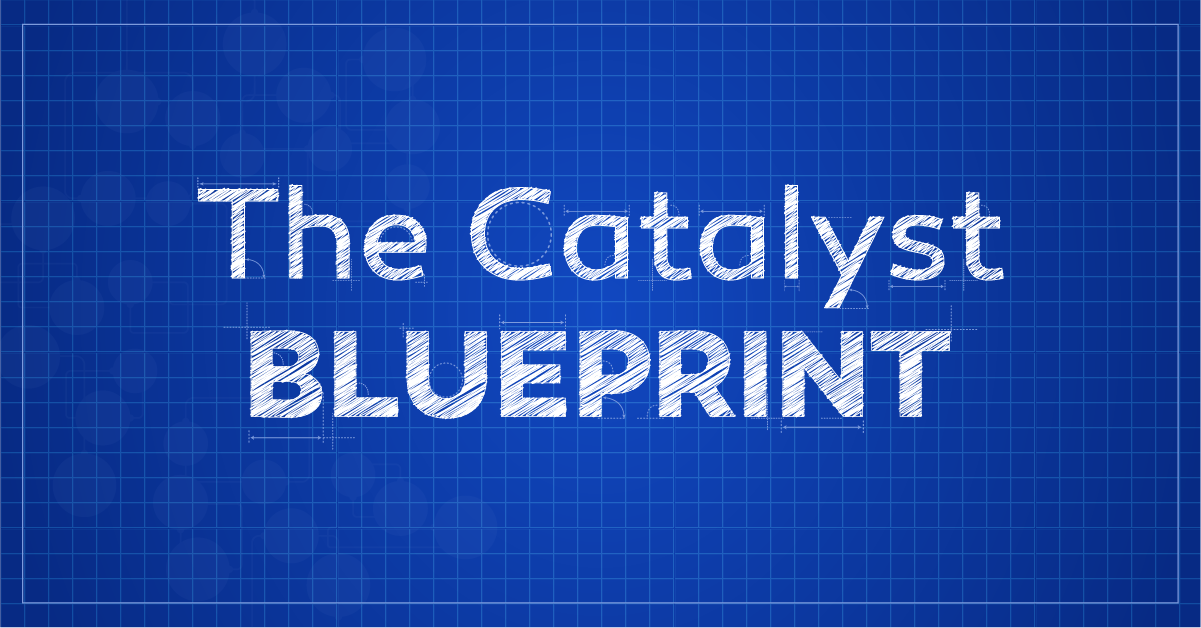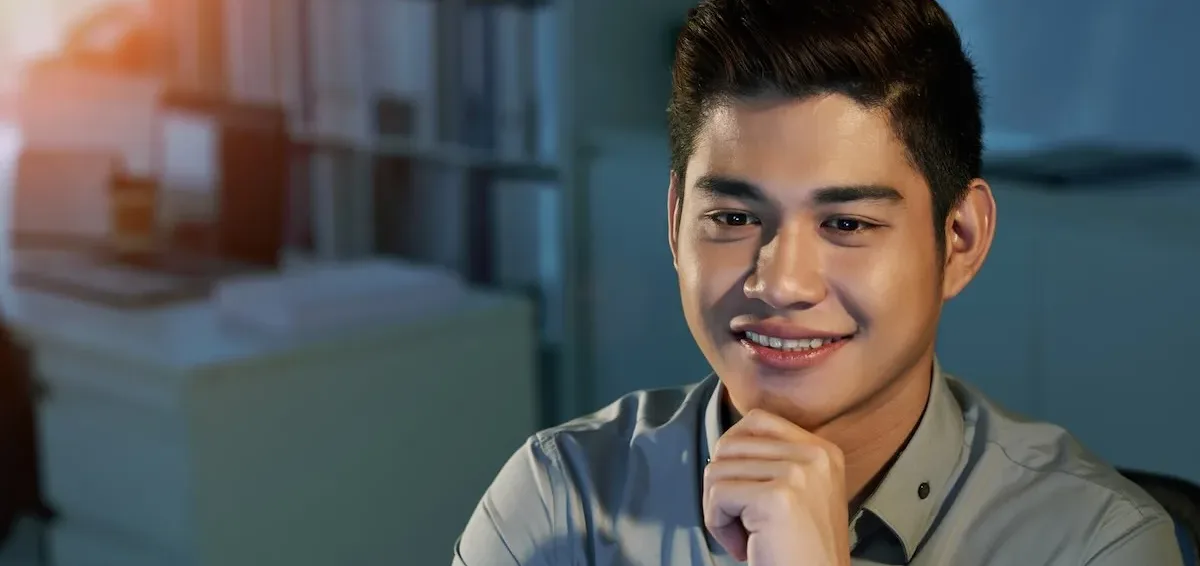To succeed as a recruiter or as a leader you have to be able to hire the right people, fast.
It’s not just that you’ll get more value from a high performer, it’s also that high performers attract and hire other high performers. The average employee quality in your team or company will quickly degrade if you’re not actively hiring the best. This makes hiring well one of the most important capabilities within a business.
And yet, very few seem to fully recognize this or know the techniques they need to do it right.
You might think because you’ve posted a job online and get 100+ applicants that you’ve unlocked a gold mine of talent and simply need to pick someone. You find someone who seems fine on paper and receives good interview feedback. But once they’re hired, you quickly start to realize they’re only “okay” or worse.
The reality is traditional recruiting tactics won’t cut it anymore. Top performers have countless options, and the few people using advanced recruiting techniques are the ones hiring them.
This guide shares those techniques that the best companies in the world use to source, evaluate, and win over truly exceptional talent.
How to Find and Attract Top Talent
If the typical process of posting a job description online, interviewing, and picking someone isn’t bringing in top talent, what does?
To hire the top talent in your industry, the first thing you need to do is expand your search to passive candidates – the people who are valued and content enough at their current jobs that they’re not actively looking for anything new. They’re often great at what they do, and their current employers are invested in keeping them for the long haul.
This doesn’t mean that there are no great active candidates. Many of the people you hire are going to be individuals actively seeking a new job. This is particularly true at lower levels in the organization.
And conversely, it certainly isn’t the case that every passive candidate is a rockstar. The point is that too many companies sit back and wait for high-performers to come chasing after them.
Bringing top talent into your business is going to require some effort from your hiring team and recruiters. Let’s first start with an overview of the channels that can help you hire the best people in your industry.
1. Outbound Recruiting
LinkedIn-based search and outreach is one of the strongest and most scalable paths for outbound recruiting.
LinkedIn Recruiter licenses allow for robust filtering of profiles on LinkedIn using resume details, bulk emailing of selected targets using variables like candidate name and current company, and talent pipeline management as candidates move through interview stages. This is the number one tool in a good recruiter’s repertoire.
Other pieces of software like Gem can be helpful add-ons that streamline the process.
For outbound recruiting to work, you need compelling, concise messaging for potential candidates about why they should be interested in this role.
It’s also recommended to have hiring managers try their hand at sending out these messages to supercharge results. This is particularly true in situations where the role being hired for is very senior, and where the hiring manager has an impressive background.
2. Referrals
Hiring 100% of employees based on referrals isn’t possible, but aiming for 30%+ is reasonable and advisable.
The value of referrals goes beyond having a built-in backchannel reference. People who know each other tend to work better together and be more content in their roles, resulting in better employee retention and output.
However, don’t hire a referral just because they’re a referral. Only referrals from strong performers should be considered, and they must be evaluated on their own merits as well. Sometimes, even good employees will refer friends or relatives who are unqualified.
To encourage referrals, you may consider implementing an employee referral program. As part of this, it’s important to keep employees up-to-date with positions you’re looking to fill, including information about what the role entails.
Referral incentives are an effective way to find new talent, but you’ll need to keep the incentive moderate (for example, $2,000 in the US has seemed to work well) and establish clear guidelines to prevent employees from taking advantage of them.
Otherwise, instead of a team of moonlighting recruiters, you may inadvertently convert much of your company into full-time recruiters who are recommending increasingly less qualified candidates.
3. Social Media Listings
Using LinkedIn, you can post job listings that reach over 500 million professionals. You have the option to share the listing for free on your company page or personal profile, or you can create a paid job posting. The biggest difference is that free job postings are visible only to connections and followers, while paid listings are visible to anyone on the platform.
Having the hiring manager share these job listings as posts on LinkedIn, and having other members of your team like and reshare those posts can improve the amount of traffic and qualified applicants these listings draw.
4. Company Careers Page
Keep your careers page up-to-date with available job openings. Even when you’re not actively seeking talent, you may want to maintain a form for interested candidates to share their information.
Whether it’s from applicants like these or from referrals, sometimes the best candidates come to you when you’re not actually looking for them. It’s important to jump on those opportunities if you can find a role for them.
While social media listings and your careers page don’t have the same hiring power as referrals, they’re still a vital part of the overall hiring process. Much less outbound attention is going into candidates for lower-level roles, meaning many great performers at those levels will still end up as inbound applicants.

Build a Strong Employer Brand
No matter which avenue you use to find potential candidates, a strong employer brand is key in attracting and retaining top talent. You should have a clear idea of your company culture, including your mission and values.
Communicate the tangible and intangible benefits of working with your organization – this could include a competitive salary, health benefits, professional development, and growth opportunities.
Showcase your brand with:
- employee testimonials
- case studies
- a strong Glassdoor score
- social media takeovers by employees
- virtual workplace tours
Engaging, quality content on your website and social media platforms can go a long way in highlighting the unique benefits of working at your company.
Also, remember that existing employees and candidates all talk to each other. If the realities of the workplace don’t match the marketing, over time this will become apparent to prospective candidates through platforms like Glassdoor and Blind, and your ability to attract top performers will decline.
Finally, keep in mind that growth tends to solve most problems. Candidates will value any equity you offer more, and will generally be more excited about the company and their ability to grow within it if the company itself is performing well.
It’s important to understand that this dynamic can lead to virtuous cycles and downward spirals. A high-performing company will attract high performers at a more reasonable price point, further improving its growth and efficiency. That growth and efficiency then attracts more high performers. A low performing company will often experience the opposite.
These dynamics are just one of many reasons why it’s so important to hire top talent and execute well.
Determining the ‘Right Fit’ Candidates
Three closely related factors impact whether a potential candidate could be a good fit for the role you’re trying to fill:
- Types of environments they’ve worked in
- Their level
- Experience
Environment
The environment a candidate is coming from helps determine if they’re a good fit for the available position.
Let’s start with an obvious example. Say you’re looking to fill a customer support leadership role at a large software company. You find a candidate who is the director of customer support with 10 years of experience and two promotions in the past two years, currently employed at a 20-person dentist office and coming from a long line of customer support roles for dentists.
They’re not going to be a good fit.
The promotions and their title look good, but the type of work they’ve been doing, the culture they’re used to, and the standards for quality, complexity, professionalism, and work ethic are all likely to be dramatically different at the dentist’s office than leading tech companies.
Many examples won’t be this obvious, so it’s important to think through this carefully.
Let’s consider a candidate coming from what appears to be a very similar role at a Fortune 500 company. They’ve seen what best in class looks like and managed large teams.
But your company is a startup, and a startup will require a much greater breadth of responsibility with less depth. It will also require more hands on building rather than running and maintaining. It’s just not common for the same person to be great at and enjoy both environments.
The bottom line is it’s important to think carefully about the environment a candidate is coming from. You can even ask the candidate about it or reach out to others at the company and ask them. Ultimately, it’s best to look for candidates who have thrived in a similar environment and in a similar role.
Level
Levels of management have to do with the title and size of a company. The Senior Director at a large company is likely to be more similar in the types of experience they’ve had to a VP or higher at a startup, especially if the large company is one of the more prestigious workplaces.
Few potential candidates will be interested in moving down the corporate ladder. If you find someone who is, they’re likely not excelling in their current role, or they will be excessively expensive for a lower level of responsibility and may also become unhappy with their decreased scope.
There’s an important caveat to consider as you’re evaluating this – what a title means to a particular company is not purely based on that company’s size. Companies like Google & Meta are famous for their title deflation, while others like Salesforce are known for their title inflation.
LinkedIn can be a helpful resource here. By looking at the titles individuals had before becoming a particular level at the company you’re evaluating a candidate from, you can quickly get a sense for levels of title inflation.
Experience
A candidate’s previous experience has everything to do with the skills they bring to a new role, and skills are not always transferable.
However, don’t get caught up on experience over potential. Having decades of experience isn’t critical for many roles.
In most cases, you want to optimize for the trajectory of the candidate, not their years of experience.
Look at how quickly they’ve been promoted, the variety of experience they’ve pursued, if they’ve founded a successful business, or if they often change jobs. These are all signs of a candidate’s intelligence, adaptability, loyalty, and work ethic.
Someone with 20 years of experience who has never been promoted isn’t a bargain. This is a red flag.
Someone with 3 years of experience and 3 promotions at a great company may not be ready to be CEO, but in 5-10 years they might. And you’re likely going to benefit tremendously from having them at your company while they’re on that journey. The ROI on these hires can often be better, even if they appear expensive relative to their years of experience.
Experience can also indicate that someone could successfully transition into a related role. For example, people who work in tax and audit roles at the big 4 audit firms build excellent transferable skills. They can often thrive in roles with some similarities, such as Consulting, Finance, Accounting, or Business Operations.

4 Essential Techniques for Evaluating a Candidate’s Ability to be Successful in the Role
Finding a potentially strong candidate is just the first step in filling an open role.
As you move into the interview process, several processes play a key role in learning more about an individual’s potential performance in the position and in winning them over.
1. Structured Interviews
A standard structured interview process helps everyone involved in the hiring process make fair comparisons between each potential candidate.
During a structured interview, the interviewer(s) asks the candidate a list of set questions in a standard order, which is then assessed against a rubric. It’s important that the rubric thoughtfully consider, for each question, which answer elements are red flags and which are strong positive signals.
Structured interviews have been proven with data to be far more indicative of a candidate’s performance than unstructured interviews. They are more consistent and less prone to error or bias. Using pre-established questions allows the interviewer to collect relevant information that’s key to determining if someone is a good fit for the position.
Candidates also appreciate this degree of thoughtfulness, which means structured interviews can lead to a more positive impression of the team and company.
Begin each interview with a short introduction. This doesn’t need to be elaborate, but it sets the tone for the rest of the interview. Greet the candidate and introduce yourself as well as anyone else present for the interview.
Before you jump into the formalities of the interview, incorporate some small talk in the conversation to break the ice and build rapport. Keep the conversation light and positive, and don’t attempt to dig for any protected information the candidate doesn’t have to disclose.
The structured question-and-answer part of the interview typically includes a mixture of different types of questions. Ensuring you’re evaluating not just for capability but also trustworthiness and cultural fit is highly recommended.
Job/Industry-specific
These questions focus on the responsibilities involved in the available position. They can also reveal how knowledgeable the candidate is about your company and the industry in general, and certain questions can help gauge how internally vs. externally focused they are.
- What is the biggest challenge facing our industry today?
- What are the advantages and disadvantages of XX software?
- What interests you most about this role?
Behavioral
Behavioral questions allow a candidate to discuss their professional experience and the relationships they form with colleagues and clients.
- When have you had to deal with a challenging business partner and what did you do?
- Describe a mistake you made at work and what your next steps were
- What has been your biggest professional challenge?
Situational
Situational questions assess a candidate’s problem-solving and critical thinking skills. They ask candidates how they would react in a variety of scenarios related to working with your organization.
- You realize your team isn’t going to meet a deadline for a client. How do you proceed?
- How would you manage an employee who isn’t motivated?
- What steps would you take to de-escalate the situation with an angry client or customer?
Qualifications
Qualifications shouldn’t be a make or break factor in choosing a candidate, but it may be helpful to choose candidates who have a certain level of knowledge or training already, especially if you don’t have time to offer the training yourself.
- What certifications do you hold?
- What steps do you take to continue your learning?
- How can your previous experience support you in this new role?
Opt for open-ended questions over yes/no questions, and absolutely skip the trick questions. Trick questions often assess for niche types of intelligence and knowledge that are not strongly correlated with success in the role. They can also frustrate candidates.
As a reminder, top talent can choose to work almost anywhere. You need to be selling as much as you are shopping in these conversations.
Building rapport with small talk and making the interview feel like a two-way conversation can go a long way toward building a positive impression with the candidate. For the best results, try responding conversationally and positively to some of the answers they provide.
2. Take-home Tests/Projects
A work sample project is one of the best methods for assessing a candidate’s capabilities and is heavily correlated with post-hire performance. It’s been shown to predict hiring outcomes more accurately than reference checks, years of experience, and even structured interviews.
During a work sample test, candidates are asked to complete a short task that mimics what they would be doing in their new role. For example, a website developer may be asked to fix a broken website, while a marketing executive may be asked to design a short pitch deck for a potential client.
The project should relate to a real problem your company has been facing but it shouldn’t function as free work. Provide fictitious data or present a scenario that has already been resolved. Aim to keep the amount of time needed under 2 hours or you run the risk of driving away quality candidates.
Just like a structured interview, work sample projects are most effective when they are:
- evaluated with a rubric that determines the value of various criteria
- consistent among all candidates in terms of task and time allotment
- presented live to at least one interviewer – this is a good way to ensure it’s original work
It’s up to you where the sample test falls in the interview process, but it is typically most effective when it occurs before a final in-person interview.
3. Reference Calls
By the end of a successful interview process, reference calls may be seen as a simple formality before you make your official offer to a candidate. However, a person’s references can often yield vital information that may not otherwise be disclosed.
This doesn’t necessarily mean references always disclose negative details you need to know – it’s important to be aware that this is going to be a fairly rare occurrence because the candidate will always handpick references to make them look good.
But, with the right questioning sometimes you can pick up on a risk even if the reference is trying to cast it in a more positive light. You may also discover specific strengths your candidate has that make them a shoo-in for the role.
Like structured interviews, reference checks are most effective when they follow a script that helps you make an objective assessment of your candidate. Begin by asking how the reference knows your candidate, then set the stage with a few positive comments.
To help a reference make an honest assessment about whether your candidate will be a good fit for the position, it’s important to share specifics about the role and associated responsibilities. Here are a few specific, open-ended questions you might use during a reference check:
- What was it like to manage the candidate?
- What unique skills did the candidate bring to their role?
- Can you tell me about a time the candidate made a mistake and rectified it?
- What would you consider their biggest weakness to be?
- Would you rehire this person? Why or why not?
Although they are sometimes shorter, carve out at least 30 minutes for each reference call so that you can ensure you allow time for a thorough conversation.
4. Backchannel References
A backchannel reference is one provided by someone who knows the candidate and who was not identified as a reference by the candidate. These can be an extremely effective tool and ideally should be used for every candidate.
That said, it’s easy to do more harm than good with backchannels, and important to avoid doing so. Watch out for:
- The backchannel’s loyalty. Is the relationship stronger with you or the candidate? This will directly influence how truthful they’re going to be. If you don’t know the answer, then you have to assume their bias is toward “helping” the candidate. Even though setting someone up for failure isn’t helpful, it’s easy to overvalue the skills of people you personally like.
- The backchannel’s performance and judgment. Are they the type of person who knows good talent when they see them? Typically the ones who do are also top performers and will exhibit signs of emotional and professional intelligence.
- Accidentally exposing the candidate. It is completely unprofessional to backchannel contact anyone at a candidate’s current company, who has any chance of outing them as being in the interview process when they haven’t already done so themselves.
Strategies to Design an Efficient Interview and Hiring Process
The interview process isn’t just a way for you to decide if you want to hire a candidate. It also gives them a perspective on what they can expect in working with your organization. Think of it as exploring a partnership: at every step of the way, you are each evaluating the other.
A few guidelines ensure that the interview process reflects well on your company and can entice candidates to pursue a position with you.
Create an Accurate and Compelling Job Description
A compelling job description highlights the unique aspects of your company and the role you’re looking to fill. What differentiates your company and this role from the competition and why should candidates specifically want this position?
Avoid mundane language around what “duties” they’ll have. Emphasize the opportunities associated with the role. What will they be able to achieve within the company from this position of ownership and impact? What will the legacy be for someone successful in this role?
Communicate in a Positive and Timely Manner
Keep candidates updated about their status at every point of the recruitment process. As soon as you start interviewing, communicate exactly what candidates can expect throughout the process, including an estimated timeline.
The amount you should be communicating is probably much more than you think. A general 48-hour rule can go a long way, meaning there is some touchpoint between your company and the candidate every 48 hours. Even if it simply means sending a short email explaining that your hiring team is still conducting interviews or in the deliberation phase.
Remember, top candidates are the buyers in this process at least as much as you are. If they don’t feel the enthusiasm from the company and the person who would be their manager, they will look for a role where they will be truly wanted and valued.
Aside from timely communication, there are a couple of great ways to accomplish this. The first is simply infusing a measured amount of enthusiasm into all communications. A simple exclamation point or a joke can go a long way toward implying an enjoyable company culture.
Another surprisingly effective technique for getting candidates excited is to have the entire interview panel send positive and optimistic notes to the candidate just after they receive the job offer. When done in a thoughtful and heartfelt way, this can help the opportunity feel much more inviting.
Streamline the Interview and Hiring Process
A long and cumbersome interview process can quickly deter attractive candidates.
A clear job description eliminates confusion about the role and outlines exactly what you’re looking for. Gently pushing internal teams and the candidate to make themselves available quickly for each of the next steps in the process, and minimizing the number of steps in the process can all go a long way toward cutting down the length of the process.
Proactively putting interview availability blocks on interviewers calendars can also make it much easier to move quickly.
Many companies average a span of two months between the first connection with a candidate and an official job offer. For lower level roles you’ll typically want to be faster than this to land the strongest performing talent before someone else does. Even for more senior roles, if your interview process drags out longer than this you may want to look at where you can speed things up.
Utilize Technology
Technology plays a key role in designing an ideal hiring process. There are now countless options in the Applicant Tracking System (ATS) space ranging from simple and remarkably affordable (like Google Sheets), to much more advanced and expensive (like Greenhouse).
An all-in-one platform like Greenhouse helps you optimize every step along the way, from sourcing candidates to interviewing, reporting on the applicant funnel, approving job requisitions and offers, and ultimately even to onboarding your new hire.
These days it should be considered table stakes to find an ATS tool that is appropriate for your company’s budget and level of complexity. For smaller and slower growing businesses it’s recommended to start small, while larger and faster growing enterprises should be exploring best in class tools like Greenhouse.
The Difference Between Effective and Poor Recruiting
Ultimately, one factor has the biggest influence on whether your recruiting efforts will be effective.
Mindset.
With every action you take, remember that you’re not buying, you’re selling. It’s up to you to make your company visible, run effective evaluations to accurately identify the top performers, and demonstrate that your company is where they want to be.
By pursuing top talent and designing an effective interview process where they feel incentivized and valued, you can bring on high caliber employees. And it’s only with those high caliber employees onboard that you can continue to bring on other top talent and maximize company performance.
After years of perfecting our recruiting craft, we created Catalyst BPX to combine the benefits of exceptional recruiting practices like those listed in this article with the many advantages of hiring offshore in the Philippines, and we’ve made it our mission to bring that unparalleled value to our customers.
Please contact us to learn more about how we can hire and operate teams for you at a fraction of onshore prices, or if you’d like to consult with us on how to perfect your own recruiting processes.





